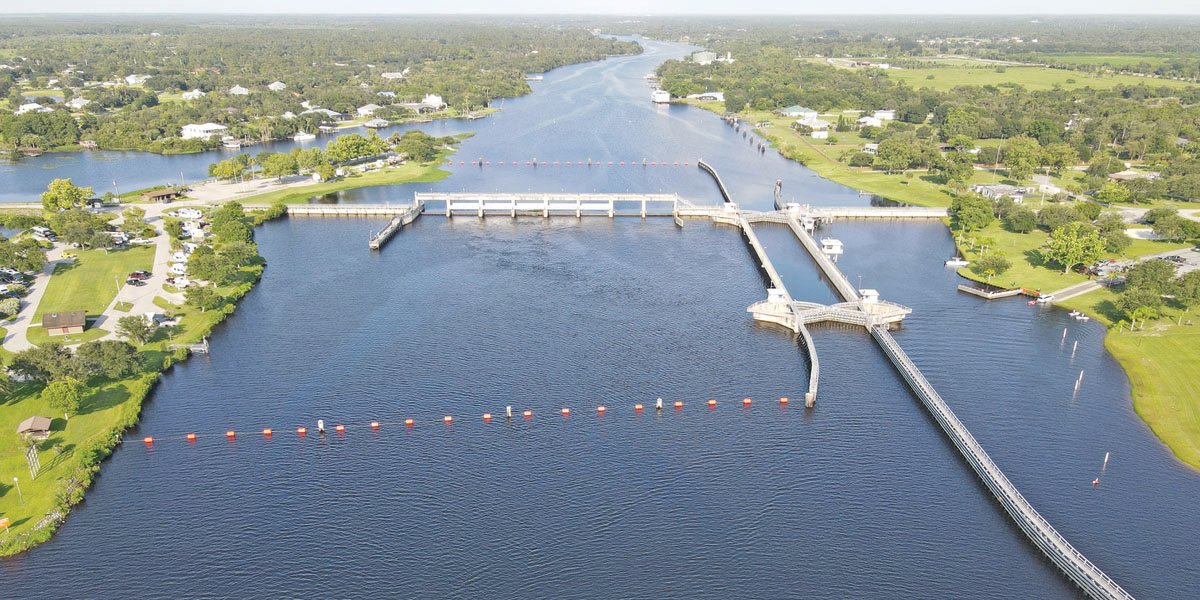Hurricane Idalia had no measurable impact on Lake Okeechobee ...
Join our family of readers for as little as $5 per month and support local, unbiased journalism.
Already have an account? Log in to continue. Otherwise, follow the link below to join.
Please log in to continue |

Hurricane Idalia had no measurable impact on Lake Okeechobee, according to information shared by Col. James Booth, commander of the U.S. Army Corps of Engineers Jacksonville District, in a Sept. 1 media briefing.
“Our standard process if we get a tropical storm on the lake is to close all the structures to protect the integrity of the Herbert Hoover Dike,” Booth explained. The colonel said they did not close the structures as the forecast did not warrant it.
The storm did impact the Caloosahatchee River, Booth said.
“We had a tidal surge that came up from the gulf up to S-79, the Franklin Lock and Dam,” he explained. The tidal surge sent the water level up and slightly over the gate of the water control structure.
“That impeded our ability to open the gate and let water out,” he explained. As a result, they could not release any basin water through the gate and the water level rose in the river east of the Franklin Lock.
“We had increased water elevation upstream of the Franklin Lock for about a day while we waited for the tidal surge to go out,” he said.
Due to preparations before the storm and the fact the Franklin Lock had to remain closed while they waited for the tidal surge to go down, the average flow at the Franklin Lock for the seven days ending on Sept. 1, was just 971 cubic feet per second (cfs). The target flow is 2,000 cfs. No lake water was released to the Caloosahatchee for the week.
All flow for the week was local basin runoff. Normally, if basin runoff does not meet the target flow set for the Franklin Lock, water from Lake Okeechobee is used to supplement the basin flow.
The Caloosahatchee River needs some freshwater flow. If the freshwater flow is too high or too low, it damages the estuaries: Too little freshwater flow means the salinity levels are too high for the estuary ecosystem. Too much freshwater means the salinity levels are too low.
Booth said they will resume the 2,000 cfs target flow at the Franklin Lock on Sept. 2.
He said if conditions start to get drier throughout the system, they will consider reducing the target flow.
“We’re in one of these periods, in our manual – it goes from 3,000 cfs if conditions are wet. That number drops down to something like 600 cfs if conditions are dry,” he said. “At this time of year, we can get weather forecasts that switch us from wet to dry.”
“This week, we’re going to pause and look at the weather conditions,” he said.
“We’re roughly at the peak of the hurricane season over the next three or four weeks. We are going to continue to monitor and adjust to the weather,” he said.
During the dry season, USACE did not operate Lake Okeechobee under the guidelines in the 2008 Lake Okeechobee Regulation Schedule (LORS-08). Instead of following those guidelines which would have called for higher volume releases east and west, the corps used “operational flexibility” to “bank” an extra 800,000 acre feet of water (about 2 feet on Lake O) in the big lake.
Booth said they no longer consider that “banked” water in making release decisions.
Over the past month, the amount of water entering the lake through direct rainfall into the Big O and flow from the north has been about the same as the amount of water leaving the lake via evapotranspiration (a combination of evaporation and plant transpiration).
Since the wet season started, very little water has been needed south of the lake for water supply due to heavy rainfall in that basin. Booth said they have sent 742,000-acre feet of water under the Tamiami Trail to Everglades National Park this year.
With the Everglades Agricultural Area (EAA) stormwater treatment areas (STAs) south of Lake O already full of direct rainfall and local basin runoff, there is no capacity to accept more lake water. The EAA Reservoir STA (A-2 STA) is under construction now. Although the reservoir will not be complete until 2030, the vegetation planting in the A-2 STA will start later this year. Booth said the initial flow to this STA will be limited to the amount needed to establish and maintain the vegetation.
“In October, we will begin to develop an operating plan for the A-2 STA while we build the reservoir,” Booth added. SFWMD is taking the lead on the A-2 STA project, while USACE is taking the lead on the EAA reservoir construction and on increasing capacity in the Miami Canal and the North New River Canal to move more water from Lake Okeechobee south to the EAA Reservoir and the A-2 STA.